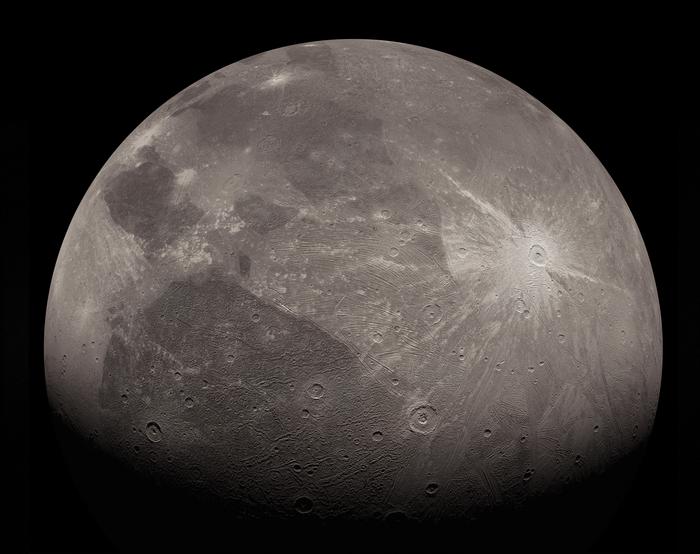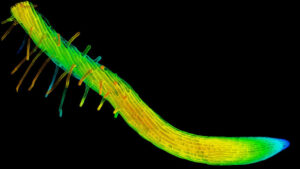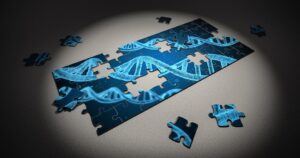
According to groundbreaking research conducted by University College London (UCL) and the University of Cambridge, the mysterious ‘space ice’ is not the completely disordered material scientists once believed it to be. This new study reveals that space ice contains tiny crystals, challenging long-held assumptions about its structure.
Space ice, which differs significantly from the crystalline ice found on Earth, was previously thought to lack structure due to the low temperatures in space that supposedly prevent crystal formation. However, this study has unveiled that the most common form of ice in the universe, known as low-density amorphous ice, actually contains tiny crystals embedded within its otherwise disordered structure.
Revolutionizing Our Understanding of Space Ice
The research team focused on low-density amorphous ice, which is prevalent in comets, icy moons, and the dust clouds where stars and planets form. Through computer simulations, they discovered that this type of ice best matched experimental measurements when it contained tiny crystals, approximately three nanometers wide—just slightly wider than a single strand of DNA.
In their experiments, the scientists also warmed up real samples of amorphous space ice, observing how the final crystal structure varied based on the ice’s origin. This finding suggests that if the ice were fully amorphous, it would not retain any imprint of its previous form.
“We now have a good idea of what the most common form of space ice looks like at an atomic level,” said lead author Dr. Michael Davies, who conducted this research as part of his PhD at UCL Physics & Astronomy and the University of Cambridge. “This is important as ice is involved in many cosmological processes, for instance in how planets form, how galaxies evolve, and how matter moves around the Universe.”
Implications for the Origins of Life
The study’s findings also have significant implications for the speculative theory of Panspermia, which posits that the building blocks of life were transported to Earth on an ice comet. The presence of tiny crystals in space ice suggests it might be less effective as a transport medium for life’s essential molecules, as a crystalline structure offers less space for these ingredients to become embedded.
Nevertheless, Dr. Davies noted that the theory could still hold true, as amorphous regions within the ice might provide the necessary environment for life’s building blocks to be trapped and stored.
“Our findings suggest this ice would be a less good transport material for these origin of life molecules,” Dr. Davies explained. “That is because a partly crystalline structure has less space in which these ingredients could become embedded.”
Challenging Assumptions About Amorphous Materials
Co-author Professor Christoph Salzmann from UCL Chemistry highlighted the broader implications of these findings, noting that they challenge long-standing views about amorphous materials. These materials are crucial in advanced technology, such as glass fibers used for data transmission, which require a disordered structure to function effectively.
“Space ice has long been considered a snapshot of liquid water – that is, a disordered arrangement fixed in place. Our findings show this is not entirely true,” Professor Salzmann remarked. “Our results also raise questions about amorphous materials in general.”
Future Research and Unanswered Questions
The research team acknowledged that their findings raise numerous questions about the nature of amorphous ices. They are particularly interested in whether the size of the crystals varies depending on how the amorphous ice forms and whether a truly amorphous ice is even possible.
Amorphous ice was first identified in its low-density form in the 1930s when scientists condensed water vapor on a metal surface cooled to -110°C. Its high-density state was discovered in the 1980s by compressing ordinary ice at nearly -200°C. In 2023, the research team identified medium-density space ice, which intriguingly has the same density as liquid water, meaning it would neither sink nor float.
Co-author Professor Angelos Michaelides from the University of Cambridge concluded, “Water is the foundation of life, but we still do not fully understand it. Amorphous ices may hold the key to explaining some of water’s many anomalies.”
This discovery not only reshapes our understanding of space ice but also opens new avenues for research into the fundamental properties of water and its role in the cosmos. As scientists continue to explore these questions, the potential for new insights into both cosmology and the origins of life remains vast.






